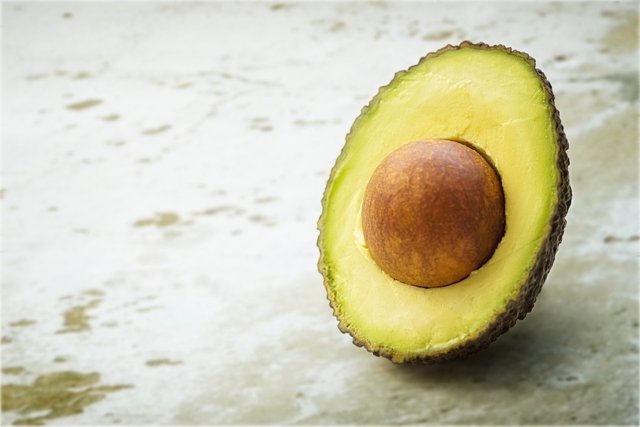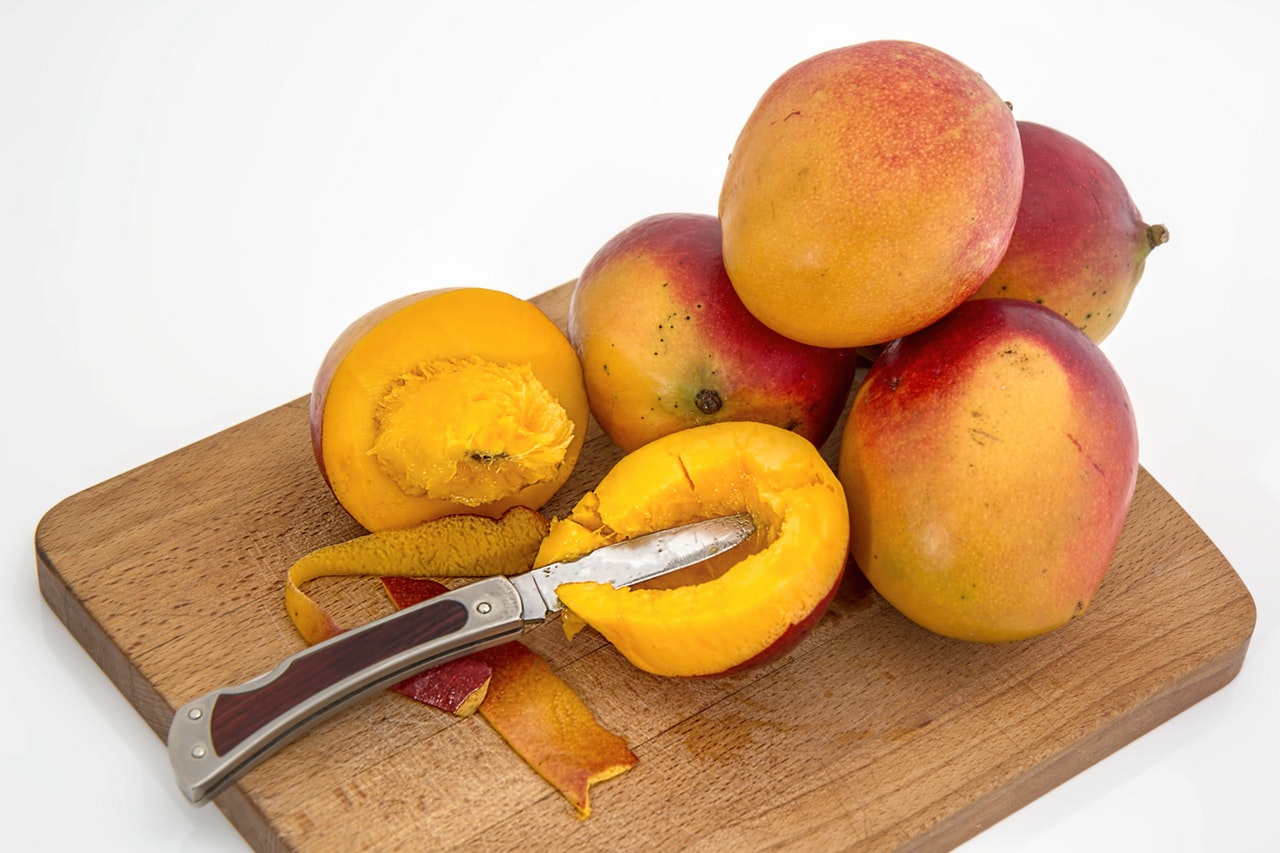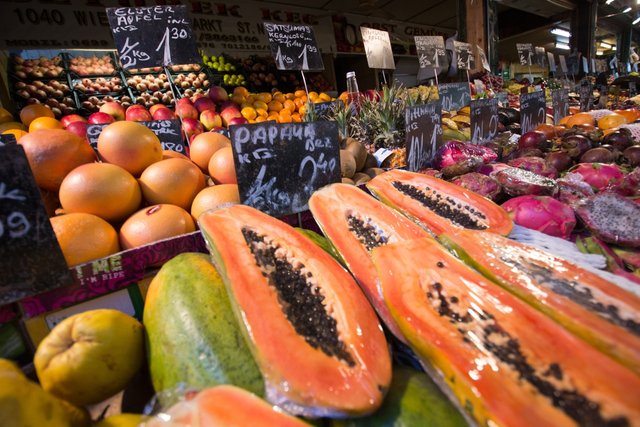Is It Ripe? How To Know When To Eat Avocado, Mango, and Papaya, Contributed by @sharingeverybite
It’s easy to tell when certain fruit are ripe and ready, but others are a little tough to tell without actually cutting into them. Here are some tips for determining whether an avocado, mango, and papaya are at their peak flavor and freshness.
Avocado
The best trick for determining whether an avocado is soft enough to eat is by removing the stem. The color is indicative of what the flesh inside looks like. The ideal color is a bright, medium green. If it’s yellow, it’s not ripe; and if it’s a darker olive or brown color, it may be getting rotten.

You can also give the avocado a good squeeze to see how soft it is. If it easily goes “mush,” it might be at the end of its life. Alternately, if you can hardly get any give, it needs a little more counter time.
Bonus tip: An extra round avocado probably has a larger-than-life pit inside, too. Instead, look for avocados that are long. 90% of the time, those will have small pits and more tasty avocado “meat.”
Mango
Mango is probably my favorite and least favorite fruit of all time. The sweetness completely depends on how ripe it is. Cut it too early, and you’re going to get a pucker-inducing bowl of sour fruit after spending the effort to cut it. Fortunately, even an extra smushy overripe mango can be overflowing with natural sugar and flavor (you just might want to use it for a smoothie instead of eating with a fork.)

So how do you know if the mango is good to go? Similar to an avocado, you’re going to give it a squeeze. You’re looking for it to be pretty soft, but not bruised feeling. The smell of a mango can also indicate when it’s ready. Get a good whiff right where the stem is. The more fragrant it is, the better it will taste. And finally, the more color a mango has, the more ripe and tasty it probably is. An all-green mango is likely premature. One with yellows, reds, and oranges is in the best condition for eating.
Papaya
This tropical beauty is a little new to me. I only recently cut into my first one and learned how to determine ripeness. As you do with mangos, smell near the stem area in search of lots of floral fragrance. If you can’t smell anything, it’s probably not ready yet. In terms of the firmness, your papaya shouldn’t feel like it has a hard armor on, but you also want to avoid getting one with wrinkled spots, since that may indicate a rotten fruit. And last but not least, look for one with hues of yellow and orange. A predominantly green papaya isn’t ready yet.

I usually use same tricks as that of the avocado. Sometimes for those once that changes to brown skin when ripe, I just judge by the colour. Same goes for papaya too. The skin usually turn yellow, then I know is ready for consumption.
Anothet fruits that gets difficult to know if is ripe is orange, lime and lemon. Sometimes, they have the skin all green and they are ripe. Pineapples too. I love all kind of fruits, but does not like mango.
So true about orange/lemon/lime! For limes, I like to pick out the ones that have the thinnest-feeling peel. Those tend to be the juiciest. It also helps to roll it on the counter before cutting to release more juices. Typically, the thinner the citrus peel, the more sweet and juicy I've found them to be.
Six years in Thailand taught me how to determine the ripeness of mango and pappaya. And also taught me not to but avacado in Thailand. Most came from Australia, and while they might be rock hard, once you cut them you'd find them rotting already inside.
One difference with mango in Thailand is that the Thais prefer to eat them unripe. Same with pappaya. Pappaya is most commonly used unripe in the ubiquitous som tam, although mango is also common. Both are also sold on the street in long strips to be dipped in a combination of sugar, salt and chili. While it might not sound great, it's actually quite delicious, though to be honest I preferred pineapple, which added a sour component to the sweet/salty/spicy dipping mixture.
That's interesting to hear that about avocados! I wonder why that is. Picking too early maybe? I've bought fruits and vegetables like that in the past as well. They stay "unripe" for ages and ages and almost overnight, they go bad.
As for preferring unripe mango and papaya, is that so they hold up better during the cooking process? If they are ingreients in a hot dish, they would probably turn to mush before the rest of the ingredients cook unless they are hard/unripe.
Interestingly, Mexicans have a similar tradition of the chili salt and also lime on mangos. I'm not sure if the mixture contains sugar, though.
Me too! I love adding pineapple for a sweet and sour component to savory recipes.
Yes! The smell factor usually indicates ripeness. It's sad that the produce nowadays are grown with pesticides, herbicides, petro chemicals, fruits no longer have a fragrant smell and quite honestly, don't have any taste whatsoever. When I do buy fruit, I like to go to farmer's market and use my senses: sight, smell, sound, touch and taste, to determine ripeness.
Ahh, yeah. It's unfortunate that fruits and vegetables are being "exhausted" from overproduction, genetically modified, and filled with pesticides. After being in Mexico for a short while, I'm noticing a crazy difference between the produce in the US and here. It's almost all locally grown and you can tell the difference in size/shape/color/smell/etc. They're not always the "prettiest" but who cares! It's the taste and nutrients I'm after. ;)
I actually like ugly-looking produce. It just means it tastes good!
Thanks for sharing @communitycoin ♫
lo tomare en cuenta a la hora de consumir estos alimentos...gracias!!!!!
Thanks @communitycoin for sharing. If u dont mind I want to share you about My country is on of the Land of Fruit and Vegetables in the world. I hope you can come to our country someday. Gayo, Central Aceh, Aceh Province in Indonesia. One of the best fruit in my country is Keprok Gayo Orange.
https://steemit.com/nature/@khaimi/jeruk-keprok-gayo-dilindas-paham-caffein-kopi-isme-9a5f3353a865c
Some of these tricks apply for cantaloupes. They don't come with a stem but if you smell where the stem is supposed to be you can determine wether is ripe enough or not. If you get an aromatic scent it's probably good to go! Thanks for sharing these tips. Very useful post!